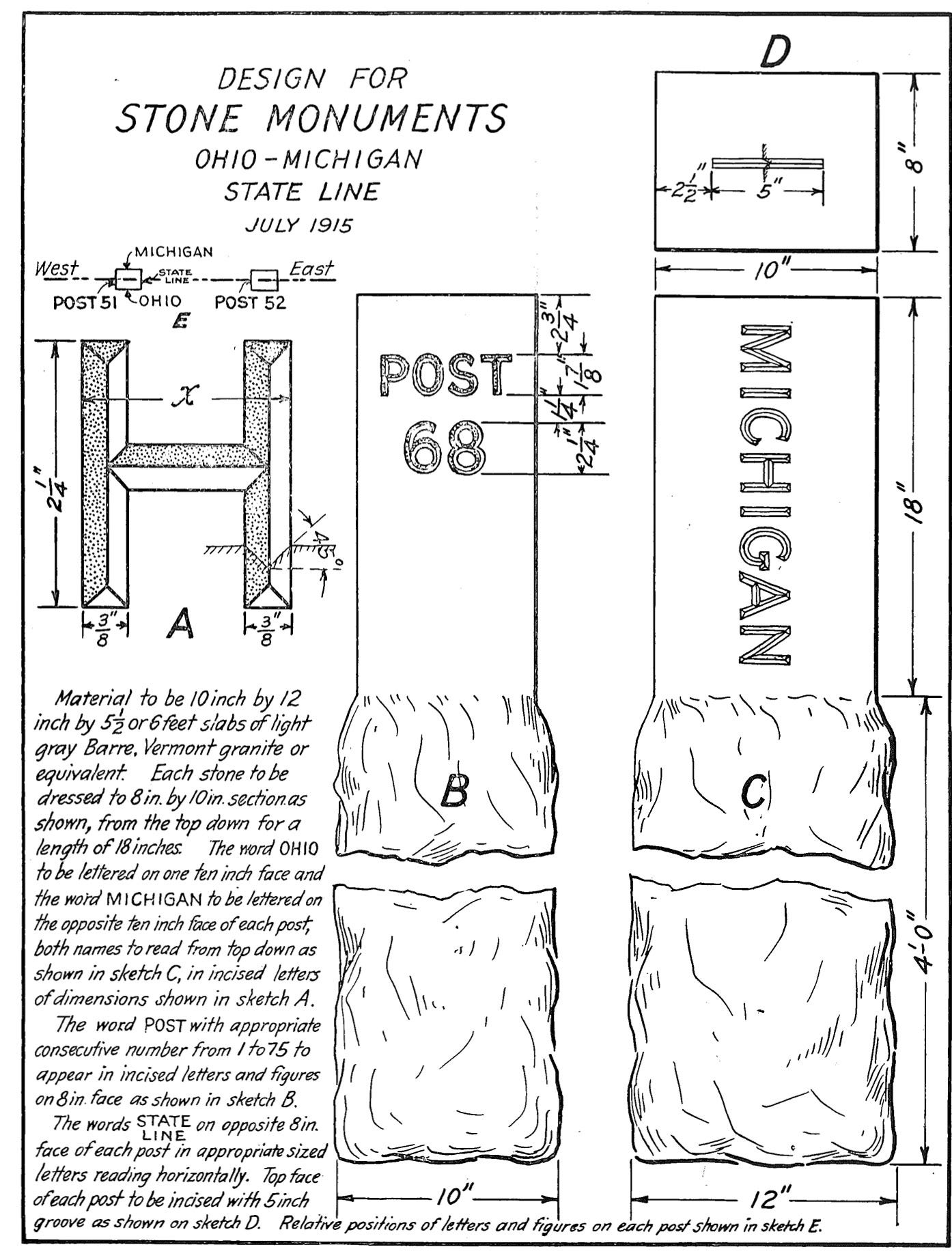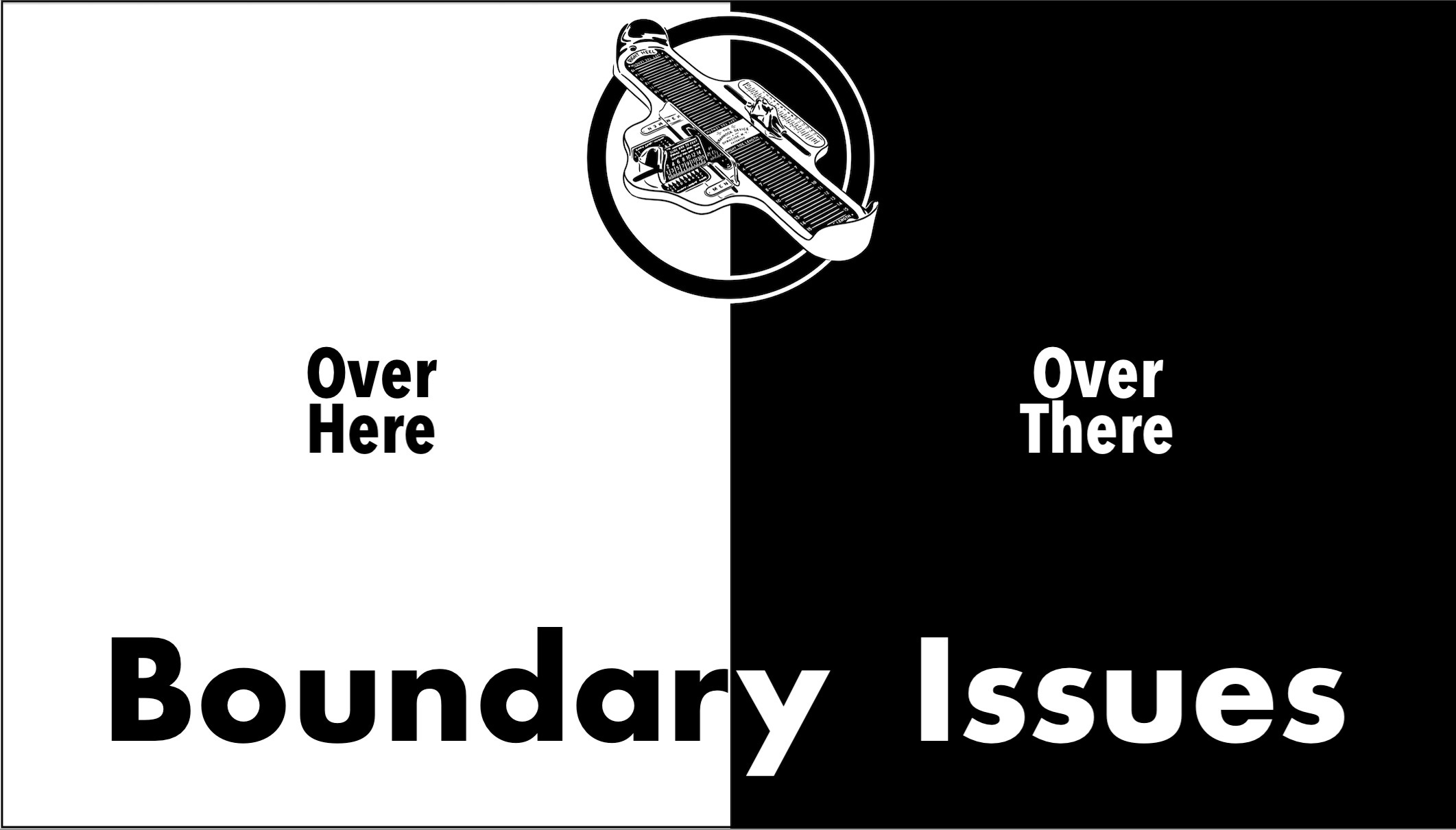Welcome to Boundary Issues, a Weeklong Look at Territorial Borders
We kick off Inconspicuous Consumption’s first-ever theme week.
Editor’s Note: This post is not paywalled, so it’s available to all. Enjoy! — Paul
Hello! As you may recall, last Thursday I did a post about enclaves, exclaves, and pene-exclaves (my new favorite term), all of which pertain to borders — international borders, state borders, municipal borders. In the wake of that piece, I found myself thinking a lot more about various border-related issues, and I knew I wanted to write more about them.
I initially thought I’d just write a follow-up piece that addressed assorted border esoterica. But my draft of that piece grew longer and longer as I kept adding new details to it, so I’ve decided to try something different. Today we’re kicking off Inconspicuous Consumption’s first-ever theme week, called Boundary Issues.
My plan is to publish new content, all related in some way to borders, every day this week. Obviously, that’s a much more aggressive publishing schedule than I usually pursue here, but I want to go deep on this topic while I’m feeling so enthusiastic about it. If I wait, I might lose the momentum, you know?
Also, none of this week’s posts will be paywalled. That’s because I want as many people as possible to access this special IC week, and also, frankly, because paid subscriptions have been lagging lately, so I’m hoping five straight days of engaging content will help convince more people to subscribe.
I’ve previously written about some tangential border-related issues, like state welcome signs and city limit signs. But those articles were mainly about the signage, not about the nuances of borders themselves. I’ll get into some of those nuances this week. It’ll be a lot of work but also a total pleasure, because I’ve long been fascinated by borders. To understand why, consider this comment that was posted on the enclave/exclave piece by reader Nick Kissoff (I’ve edited his comment slightly for length and clarity):
I grew up in in the Point Place neighborhood of Toledo, which is on the border of a Michigan exclave called the Lost Peninsula. It features a restaurant, a marina, and some residents who officially live in Michigan but need to travel through Ohio to access the rest of Michigan. There’s also an Ohio/Michigan survey monument from the 1915 border survey. My brother and I used to ride our bikes to the monument and jump back and forth across the state line for fun.
There’s a lot to unpack there. First, let’s check out the Lost Peninsula exclave that Nick mentioned, beginning with a look at Toledo’s location just below the southeast corner of Michigan:
Now let’s zoom in on Toledo, so we can see Point Place (the neighborhood where Nick grew up) and the Lost Peninsula, and then zoom in further on the Lost Peninsula itself:
So there you go — a classic exclave. But that other peninsula to the west of the Lost Peninsula is not an exclave, because its residents can access the rest of Michigan via highway US-24 ALT. (If the Lost Peninsula had a bridge connecting it to that other peninsula, then it would no longer be an exclave.)
Next, Nick mentioned that the Lost Peninsula has a border monument — one of 72 such markers that were surveyed and installed along the Ohio/Michigan border in 1915.

Most of the Michigan/Ohio border monuments look like the ones in the design specs shown above. But post No. 70 — the one Nick saw on the Lost Peninsula when he was growing up — is much bigger and has more text. (It was also knocked slightly out of alignment by a drunk driver in 2011 but was later restored to its proper position. You can learn more about that, and about the Ohio/Michigan border monument program, here.)

Border monuments are very cool, and I’ll definitely be writing more about them later this week. Meanwhile, let’s focus on the last thing Nick wrote: “My brother and I used to ride our bikes to the monument and jump back and forth across the state line for fun.”
Y-E-S! I totally relate to this. Seriously, is there anyone who hasn’t stepped back and forth across some sort of border, just for the fun and the mind-fuck of it? It’s so weird that you can move a few inches and suddenly be in a different state, or a different country, or a different time zone. Borders are bizarre!
Look at how much mileage we’ve gotten out of Nick’s comment — and that’s just the tip of the border iceberg. In fact, I just learned that there’s a subreddit called r/Borderporn, which may end up giving me even more border-related ideas to explore. So this should be a really fun week! Thanks in advance for coming along for the ride.
One more thing before we wrap for today: As I worked on last Thursday’s piece about pene-exclaves, the “pene” prefix got me thinking about penne, the pasta. So over the weekend I decided to whip up a little border-related pasta dish. Ladies and gentlemen, I give you penne exclave:
As you can see, those three pieces of penne on the left can only reach the rest of the penne by going through the sauce. Penne exclave! I’m happy to report that there has been free movement across the sauce/penne border, resulting in excellent trans-territorial relations.1
Okay, that’s it for today. See you back here tomorrow for Day 2 of Boundary Issues!
Paul Lukas has been obsessing over the inconspicuous for most of his life, and has been writing about those obsessions for more than 30 years. You can contact him here.
If you wanted to have a restaurant with a fun theme, you could do worse than going with penne. In addition to penne exclave, your menu could include penne candy, lucky penne, penne farthing, penne for your thoughts, a penne saved is a penne earned, not a penne less, a pretty penne, and more. Misbehaving customers could be served penne dreadful, and the worst table in the house could be called the penne tentiary.








The story of why Michigan has that particular penne-exclave is a fascinating footnote in early American history, which involves an actual shooting war between the state of Ohio and the territory of Michigan over possession of Toledo, and the resolution involved a bribe from Congress, a frostbitten convention, and the transfer of what is now the Upper Peninsula from the Wisconsin territory to the Michigan territory.
In the end it was a classic baseball-style three-way trade in which Ohio got Toledo, Michigan got the Upper Peninsula, and Wisconsin got nothing of value at all.
https://en.wikipedia.org/wiki/Toledo_War
The former Geography teacher part of me loves the penne dish idea as a way to demonstrate the various "claves" definitions. That idea would make a fantastic lesson/class project. Well done!